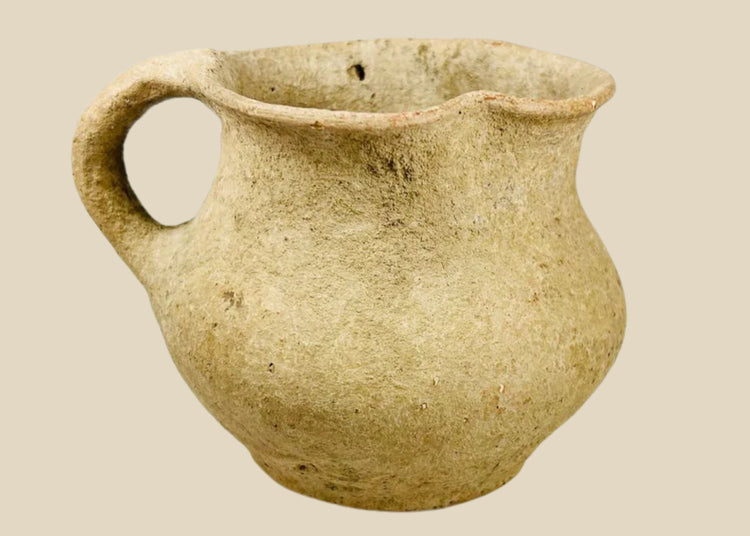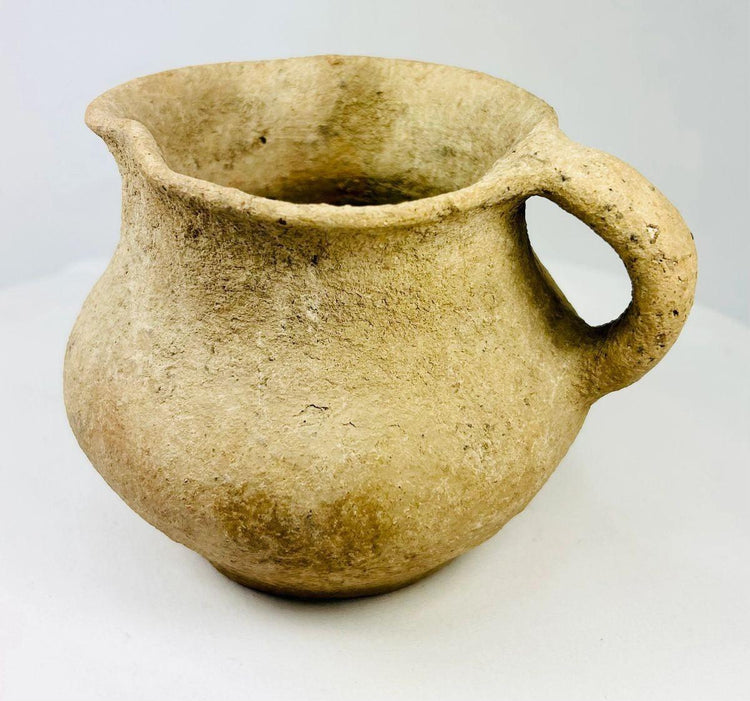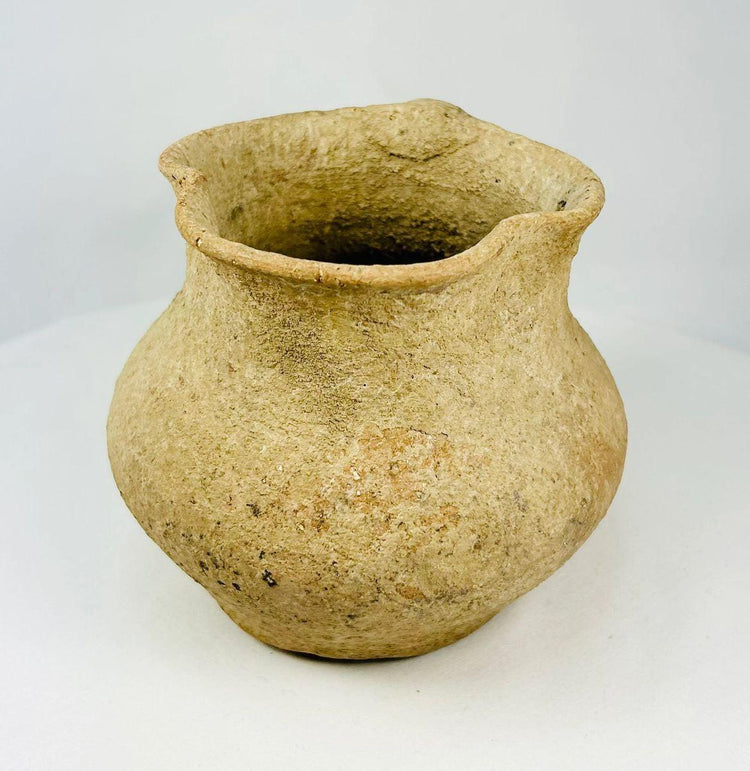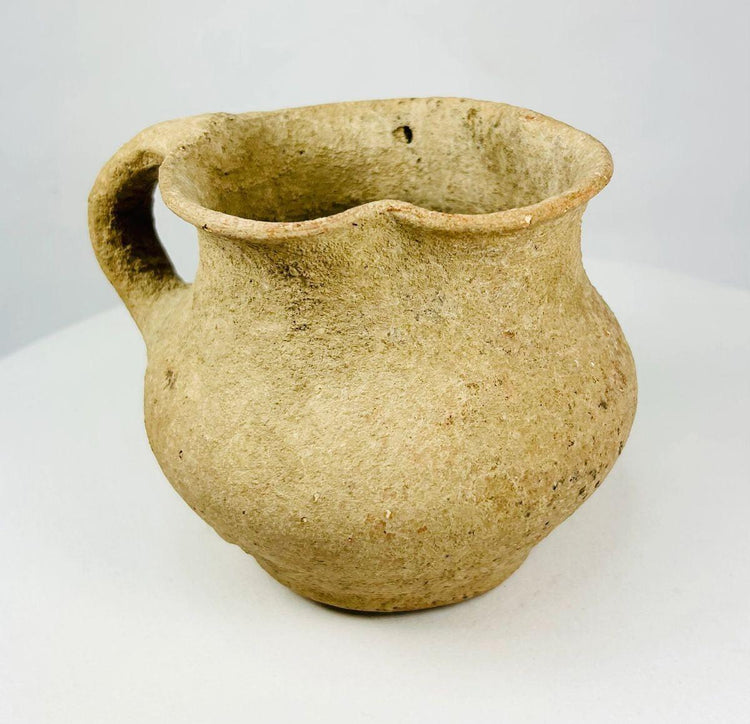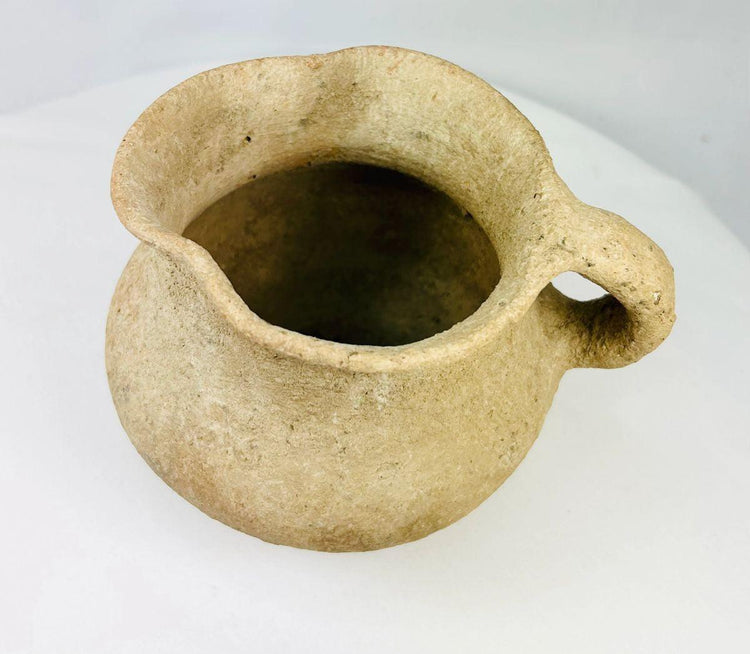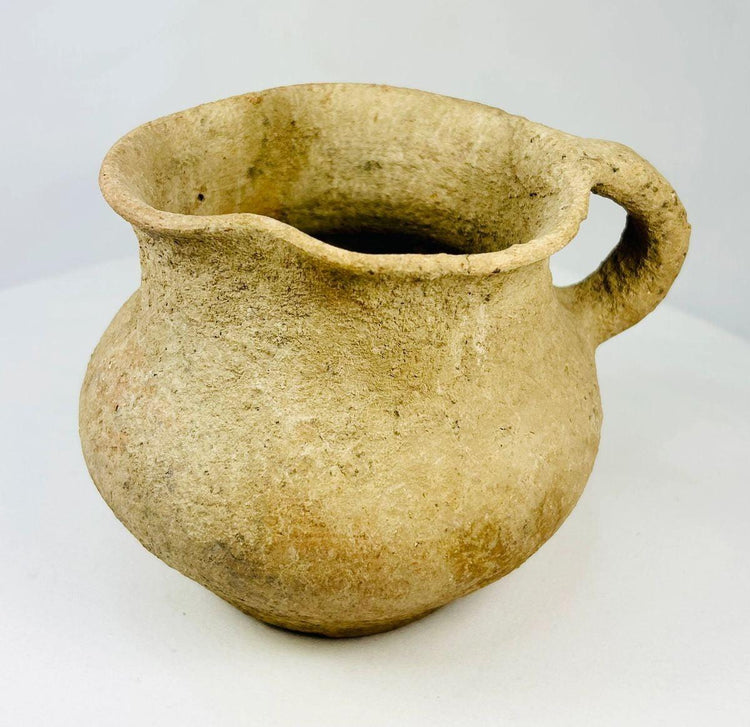Ancient Greco-Roman | Terracotta Pitcher with Handle | 1st–3rd Century CE
Description
More
Less
Historical Context & Origin
Region: Mediterranean, likely Roman Empire territories
Material: Terracotta clay
Period: 1st–3rd Century CE
Description
This finely crafted oenochoe (wine jug) is a classic example of Greco-Roman ceramic artistry, designed for both practical use and ceremonial function. The vessel features a bulbous body tapering towards the base, a single arched handle connecting the rim to the shoulder, and a slightly pinched spout—hallmarks of the oenochoe form. Its modest yet elegant design reflects the balance between utility and artistry that defined Greco-Roman pottery. The surface displays a naturally weathered patina, the result of centuries of use and burial, adding to its authenticity and historical character.
Features
- Bulbous body with narrow base for stability
- Single curved handle for easy handling
- Pinched spout for controlled pouring
- Surface wear and aged patina consistent with ancient use
Cultural Significance
The oenochoe was central to daily and ceremonial life in the Greco-Roman world. Used for storing and pouring wine, oil, or other liquids, it played a role at banquets, domestic meals, and religious rituals alike. Wine, in particular, was a key element in both social gatherings and sacred offerings to the gods. As such, vessels like this one bridge the realms of the ordinary and the sacred, embodying the cultural values of hospitality, ritual, and craftsmanship.
Condition
The jug is well-preserved, with its structure intact. Minor chipping and surface abrasions are present, consistent with its age and long-term use. These features enhance its authenticity and underscore its role as a utilitarian object of antiquity.
Dimensions (approximate)
Height: 4.25 in
Age
Approximately 1,700–1,900 years old
Description
Historical Context & Origin
Region: Mediterranean, likely Roman Empire territories
Material: Terracotta clay
Period: 1st–3rd Century CE
Description
This finely crafted oenochoe (wine jug) is a classic example of Greco-Roman ceramic artistry, designed for both practical use and ceremonial function. The vessel features a bulbous body tapering towards the base, a single arched handle connecting the rim to the shoulder, and a slightly pinched spout—hallmarks of the oenochoe form. Its modest yet elegant design reflects the balance between utility and artistry that defined Greco-Roman pottery. The surface displays a naturally weathered patina, the result of centuries of use and burial, adding to its authenticity and historical character.
Features
- Bulbous body with narrow base for stability
- Single curved handle for easy handling
- Pinched spout for controlled pouring
- Surface wear and aged patina consistent with ancient use
Cultural Significance
The oenochoe was central to daily and ceremonial life in the Greco-Roman world. Used for storing and pouring wine, oil, or other liquids, it played a role at banquets, domestic meals, and religious rituals alike. Wine, in particular, was a key element in both social gatherings and sacred offerings to the gods. As such, vessels like this one bridge the realms of the ordinary and the sacred, embodying the cultural values of hospitality, ritual, and craftsmanship.
Condition
The jug is well-preserved, with its structure intact. Minor chipping and surface abrasions are present, consistent with its age and long-term use. These features enhance its authenticity and underscore its role as a utilitarian object of antiquity.
Dimensions (approximate)
Height: 4.25 in
Age
Approximately 1,700–1,900 years old
You May Also Like




















